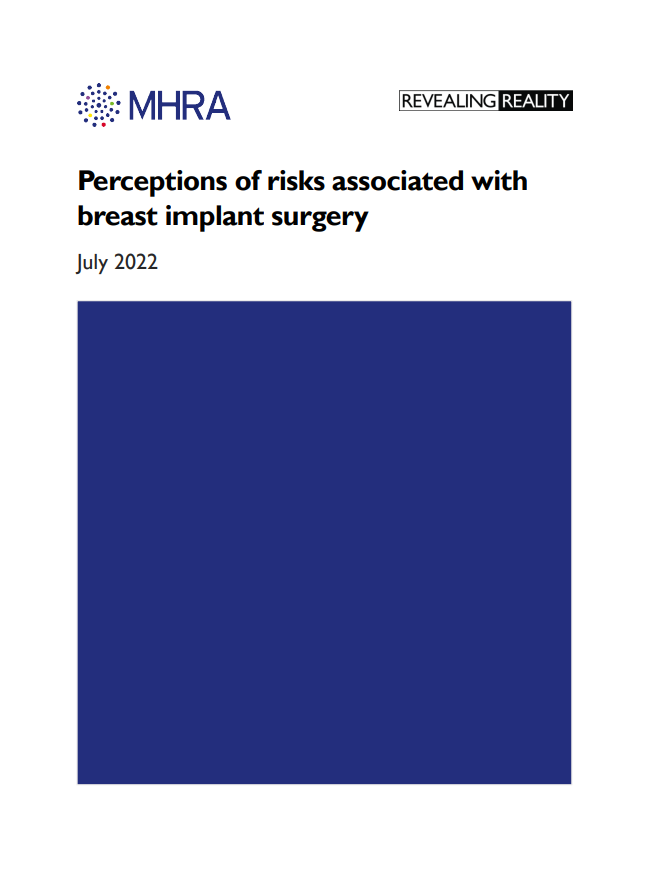Like every surgical procedure, breast implant surgery comes with a number of associated risks – including BIA-ALCL (breast implant associated anaplastic large cell lymphoma). But are people undergoing the surgery aware of this, and other associated risks?
The Medicines and Healthcare products Regulatory Agency (MHRA) commissioned us to conduct research with patients who had undergone or were about to undergo breast implant surgery, to understand how well they understood the risks. Through a mixed methods approach, we uncovered revealing insights into patient awareness and decision-making, prompting meaningful changes in how risks are communicated.
We carried out 30 in-depth remote interviews with individuals who had either undergone the procedure within the last three years, or who were preparing for it – whether for cosmetic, reconstructive, or revision purposes. For those awaiting surgery, we captured real-time insights into the information they received and how they weighed risks. For those reflecting on their surgery experience, we mapped their decision-making journeys to build as accurate a picture as possible of what information they engaged with during the surgery process, and their perceptions of risk at the time.
We also carried out a survey with 2000+ adults to capture the general public’s awareness and perception of BIA-ALCL, and a smaller survey distributed specifically to those who had or considered having breast implant surgery.
Many people lacked a clear understanding of the health risks.
- Most patients were unaware of the longer-term or cumulative health risks of breast implants, particularly regarding replacement timelines for their implants.
- Whether for cosmetic, revision or reconstructive surgeries, most people were highly motivated to have breast implant surgery. This high level of emotional investment shaped how they sought and processed information about risk; so healthcare professionals and other risk communicators must work harder to communicate the associated risks.
- People tended to seek out information on these topics from social media or other online sources, which could include marketing content from clinics. These sources rarely mentioned risk.
The MHRA has now published their action plan announcing a number of changes, including developing a cosmetic breast augmentation risk awareness tool, working with manufacturers to ensure that risks of BIA-ALCL are clearly outlined in the implants’ Instructions for Use and patient brochures, and introducing new regulations requiring manufacturers to supply implant cards within the upcoming medical device regulatory framework.
By improving how the risks of breast implant surgery are communicated, these changes will ensure patients are better able to deliberate on the implications of undergoing the procedure.

